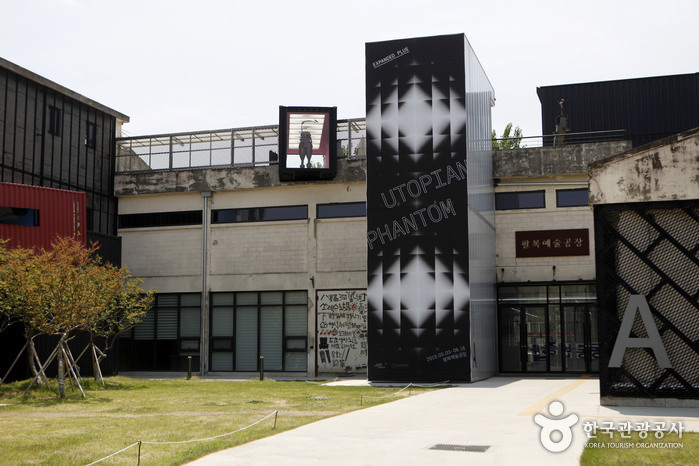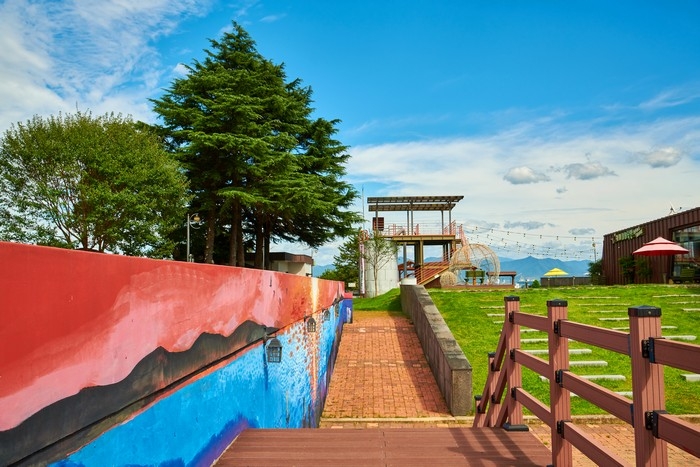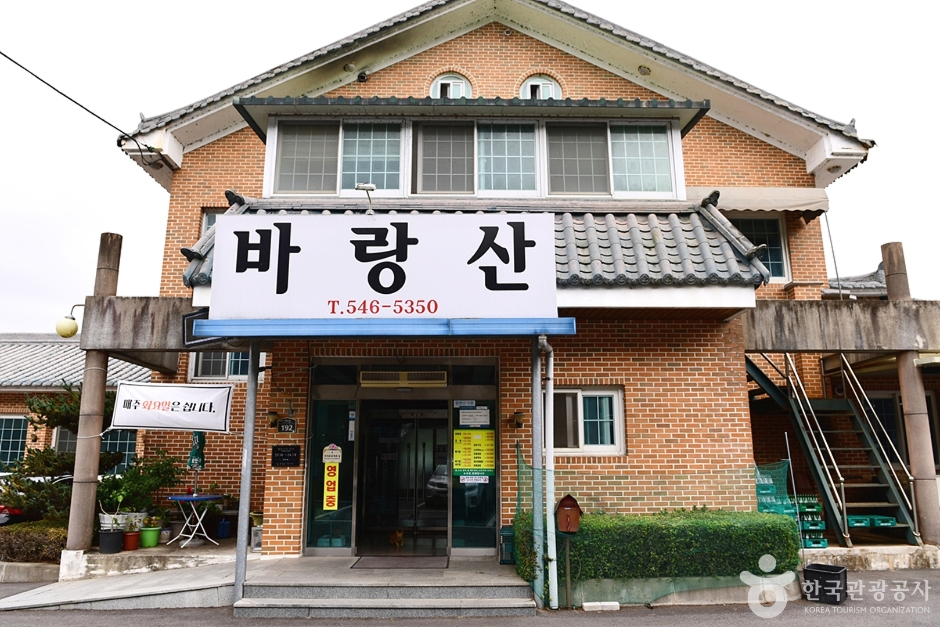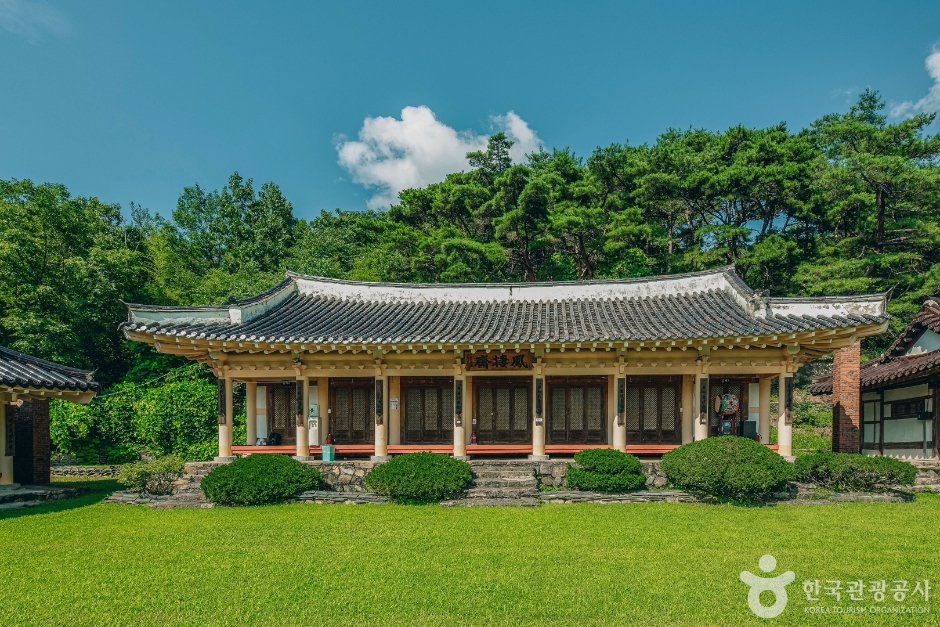Palbok Art Factory (팔복예술공장)
5.1Km 2024-05-02
46 Guretdeul 1-gil, Deokjin-gu, Jeonju-si, Jeonbuk-do
Palbok Art Factory was founded in an old cassette tape factory twenty-five years after it went out of business with the advent of the CD. The factory aims to spread art and artistic creativity to the world, much like the previous cassette tape company did at their peak in the '80s.
Jeonju National Museum (국립전주박물관)
5.2Km 2024-04-07
249, Ssukgogae-ro, Wansan-gu, Jeonju-si, Jeonbuk-do
+82-63-223-5651
The Jeonju National Museum was established in 1990 as an institute for the research, preservation, and exhibition of Jeollabuk-do’s most prized cultural treasures. In November of 2002, a Social Educational Hall was opened as a creative educational space to provide visitors a place to experience traditional culture. The museum houses over 40,000 artifacts, a majority of which were excavated from the Jeollabuk-do area, and has on exhibit over 2,000 pieces spread throughout 4 exhibition halls and 1 outdoor exhibition hall. The museum also serves as a venue for numerous cultural activities and educational programs, providing visitors with the opportunity to gain a deeper understanding of Korea’s proud history.
Saekjang Rice Mill (색장정미소)
5.3Km 2024-04-07
2-15 , Wonsaekjang-gil, Wansan-gu, Jeonju-si, Jeonbuk-do
+82-63-272-2460
Saekjang Rice Mill, located approximately 5 minutes by car from Jeonju Hanok Village, is a unique cafe that transformed an old rice mill from the 50s. The cafe exhibits antique art works perfect as a photo spot, but the best photo zone is on the second floor that will take you back in time.
Hotel One [Korea Quality]호텔원[한국관광 품질인증]
7.4Km 2024-04-07
21-13 , Ogong-ro, Wanju-gun, Jeonbuk-do
+82-63-225-9333, hoteloneinnocity@naver.com
Hotel One is a chain business hotel in Jeonju Innovation City, Jeollabuk-do, with a number of government offices, public facilities and tourist attractions nearby. Public transport links are good, with Jeonju Bus Terminal and Jeonju Station not far away. The hotel provides room service and other standard hotel facilities, and there are meeting and seminar rooms on site. Hotel One is designated as a safe lodging place for women and families.
Jeonju World Cup Stadium (전주월드컵경기장)
8.1Km 2024-04-07
1055, Girin-daero, Deokjin-gu, Jeonju-si, Jeonbuk-do
+82-63-239-2546
The Jeonju World Cup Stadium was built with tradition in mind as its roof and stands are designed with an image of traditional fan, the pillars in sotdae design and cables in 12 strings of gayageum.
Open Space Nu-e (복합문화지구 누에)
9.1Km 2024-04-06
462-9 , Wanju-ro, Wanju-gun, Jeonbuk-do
Nu-e, a complex cultural district located in Wanju-gun, Jeollabuk-do, opened with the goal of "a living space where everyone communicates through art." As part of the cultural regeneration project, it was built in the Jeollabuk-do Jameop (silkworm business) testing center complex and is carrying out projects such as cultural and artistic education, exhibition planning, and the creation of creative spaces. Facilities include Nu-e Art Hall, where various art exhibitions and performances are held, guesthouse 'Sum' for local residents, a camping ground and lounge, a pottery room, a kiln room, etc. There is a children's space called "Dreaming Nu-e Playground" where adults are not permitted, making it a good place for family trips. It is also recommended to visit the Jeonbuk Provincial Museum of Art and Samnye Culture and Art Village, representative tourist facilities in Wanju-gun.
Korea Expressway Corporation Arboretum (한국도로공사 전주수목원)
9.1Km 2025-07-22
462-45 Beonyeong-ro, Deokjin-gu, Jeonju-si, Jeonbuk-do
The Korea Expressway Corporation Arboretum is located in Jeonju and operated by Korea Expressway Corporation. The arboretum was opened to counterbalance the environmental damage caused by the construction of expressways. As such, the arboretum maintains and promotes the conservation of many beautiful flora from across the country.
Bibinakan (비비낙안)
10.2Km 2024-10-15
26 Bibijeong-gil, Samnye-eup, Wanju-gun, Jeonbuk-do
Climbing the steep stairs leading to Bibinakan affords one a view of the open lawn and view of the cafe where BTS members sat comfortably. The scenery of Wanju and the leisurely flow of the Mangyeonggang River as well as downtown Jeonju can be seen in a panoramic view without obstruction. Especially when the sun goes down, the sunset over the river is spectacular scenery.
Barangsan Garden (바랑산가든)
10.7Km 2024-04-07
192 Daeyul 2-gil, Geumgu-myeon, Gimje-si, Jeonbuk-do
Barangsan Garden is a maeuntang (spicy fish stew) restaurant where visitors can enjoy their meal while admiring the scenery of Daeyul Reservoir. Their flagship dish is the megi tang (spicy catfish stew) made by boiling wild catfish and dried radish in a perilla seeds broth with seasoning. Other popular menu items include jap tang (assorted spicy seafood stew) made with freshwater fish and minmul jangeo gui (grilled freshwater eel).
Happydream (행복드림한옥)
10.8Km 2024-08-05
181-21 , Bongseoan-gil, Wanju-gun, Jeonbuk-do
+82-63-247-0050, +82-10-3677-5339
Dueok Happydream Village is located in Bongseo-gol, Wanju-gun, Jeollabuk-do - a location said to be one of the most propitious in Korea, owing to the surrounding mountains’ resemblance to the Bonghwang mythical bird. The guesthouse’s tile-roofed buildings are set in a wide grassy yard against a background of green mountains. As well as accomodation the village operates various nature and traditional culture experience programs, some of which take place at the guesthouse. The rooms are small but clean and comfy, and with the doors open offer scenic views.


![Hotel One [Korea Quality]호텔원[한국관광 품질인증]](http://tong.visitkorea.or.kr/cms/resource/42/2949342_image2_1.jpg)




 English
English
 한국어
한국어 日本語
日本語 中文(简体)
中文(简体) Deutsch
Deutsch Français
Français Español
Español Русский
Русский